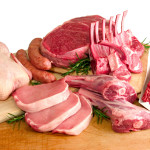 “Natural” vs. Organic Meat
“Natural” vs. Organic Meat
Many times, I must admit, I fly through the supermarket in a blurred frenzy. If I have a half hour to “grab and go”, I become a woman on a high-speed mission. Like you, I am trying to make healthy food choices as I “grab”. The other day I snatched up of a bag of “natural”, individually frozen chicken breasts from the freezer section of the “healthy supermarket” I was in—thinking, in my hurry, I had an organic poultry product in hand.
Later that day, when I had some time to think, I questioned my poultry purchase. What does “natural” chicken actually mean? My lack of understanding led me to research the difference between natural and organic meat and poultry. Here’s what I discovered:
By USDA standards, a food can be labeled as natural if it has been minimally processed and contains no artificial ingredients (including added color) or preservatives. This, my friend, is a far cry from being inherently chemical and hormone-free!
Organic meats and poultry, on the other hand, are held to a much higher standard. According to the USDA, this distinction is reserved for animals which have 1) been fed organic feed (not containing animal byproducts or grown with the use of pesticides) and 2) not been treated with antibiotics or growth-promoting hormones. In order to maximize the health of these animals, without “chemical doctoring, farmers must employ rotational grazing, a balanced diet, and clean “housing”. All of these extra measures to ensure a healthy animal, and hopefully a healthier “eater”, obviously come at a higher cost. However, this might just be an area where the benefits actually do outweigh the costs.